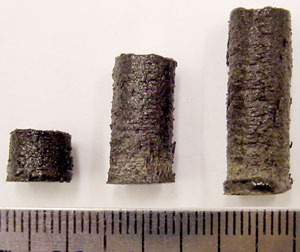
Researchers from several US institutions including NASA recently published a paper describing their experiment in “Lunar 3D Printing”. No, they weren’t actually ON the Moon. Instead they produced synthetic lunar soil (called “Regolith” by scientists) and attempted to use it as material in a 3D printing process.
The process used was “LENS”, or Laser Engineering Net Shaping, a technology from Optomec that we wrote about last year. A very high-power laser fuses metal powder at the instant its deposited on a surface.
The purpose of the experiment was to demonstrate the feasibility of directly using lunar soil to build structures and components, with the obvious benefit of avoiding the costly shipment of heavy metal feedstock from Planet Earth.
In this video, Dr. Amit Bandyopadhyay enthusiastically explains how it works.
Did the experiment work? According to the paper’s findings:
A combination of laser parameters resulting in a 2.12 J/mm2 laser energy appeared to be ideal for generating a melt pool necessary for lunar regolith powder deposition without excessive liquid pool spreading and cracking of solidified parts. The results show that LENS™ based laser processing transformed crystalline regolith into nanocrystalline and/or amorphous regolith structures as a result of complete melting followed by resolidification. Laser processing also resulted in marginal changes in the composition of the regolith.
We suspect that means it worked.
Now, we need only deliver an Optomec LENS-750 to the Moon and we’re all set.

